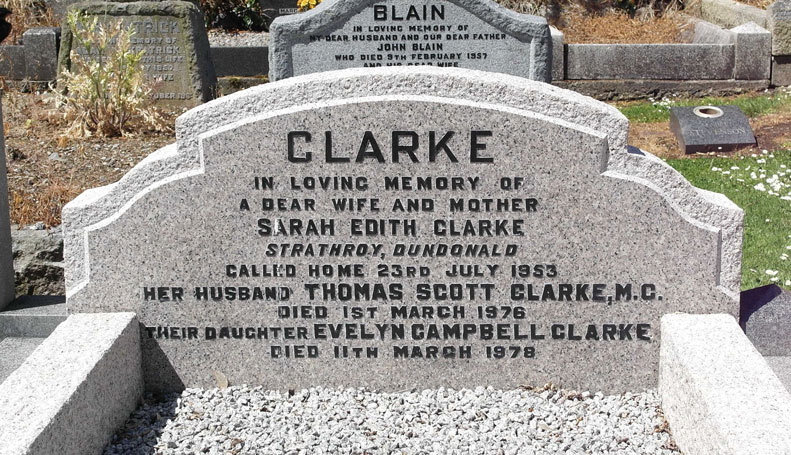Second Lieutenant Thomas Scott Clarke, MC
Thomas Scott Clarke was born on 21 August 1887 at Crossgar, Dromara, Banbridge, County Down, the first of four children of farmer Andrew Thomas Clarke and his wife Agnes Maria (nee Scott). His father also had two children from a previous marriage. By 1911 he was living and working on the family farm at Crossgar with his parents and one surviving sibling. His father had become a local magistrate.
Clarke enlisted in the North Irish Horse on 3 or 4 February 1915 (No.1438 – later Corps of Hussars No.71386). He embarked for France with F Squadron on 17 November 1915.
In 1917 he applied for a commission in the infantry and left the regiment for officer cadet training in the UK. He was appointed a 2nd lieutenant on 27 March 1918 and posted to a reserve battalion of the Royal Irish Regiment.
Some months later, Clarke embarked for France to join the 2nd Battalion, Royal Irish Regiment, but instead was attached to the 1st Battalion, Royal Dublin Fusiliers, joining that unit on 2 July 1918.
Clarke saw action with the 1st Battalion in Belgium during the Advance to Victory offensive from August 1918. On 14 October they were at Ledeghem. According to the battalion war diary:
At 5.35 a.m. attack was opened, 2nd Royal Fusiliers leading, closely supported by 1st Royal Dublin Fusiliers ... Shortly after Zero a thick fog, caused by ground mist and smoke shells, made visibility difficult and led to loss of direction. The first objective was reached by parties of all three Battalions at 9.0 a.m. There heavy M.G. and T.M. fire was met with, which temporarily held up the advance. ... At 12.30 p.m. the advance was continued to the blue line, 1st Lancs. Fusiliers leading, followed by 1st Dublin Fusiliers in close support, with 2nd Royal Fusiliers in reserve. The advance was pushed forward as far as a line running from about G.8.a.80.60 to G.8.c.80.80. At this line heavy enemy M.G. and T.M. fire was met with, and further progress was very slow.
The battalion lost one officer killed and three wounded, eight other ranks killed, 47 wounded and one missing. Clarke was later awarded a Military Cross for the role he played in the action. His citation reads:
In operations east of Ledeghem, 14th October, 1918, for most conspicuous gallantry and dash. When his platoon was held up on two occasions by snipers in farmhouses he went forward and rushed the farmhouses, killing some of the garrison and capturing the remainder, thus enabling his platoon on both occasions to continue the advance without suffering casualties.
Clarke returned to England for demobilisation on 28 December 1918. He relinquished his commission on 1 September 1921.
On 29 October 1919 he married Sarah Edith Campbell at Dromara Presbyterian Church.
For many years he worked in the Northern Ireland civil service in the Ministry of Agriculture. In 1919 he held the post of inspector, in 1929 supervisor (flax and potatoes), 1930 farm manager, and in 1938 assistant inspector.
During the Second World War he was appointed a 2nd lieutenant in the Northern Ireland Command (298965).
Clarke died on 1 March 1976. He was buried in St Elizabeth Churchyard, Dundonald, County Down.

Image sourced from Ancestry.com, contributor AlfBeard44.
